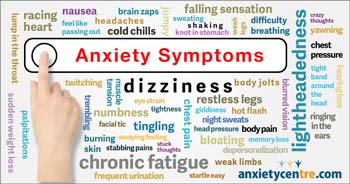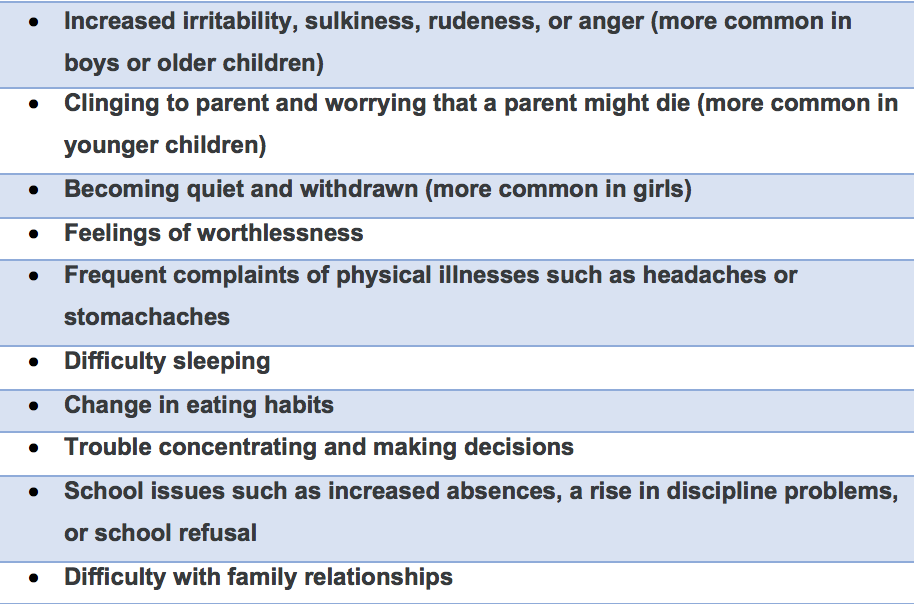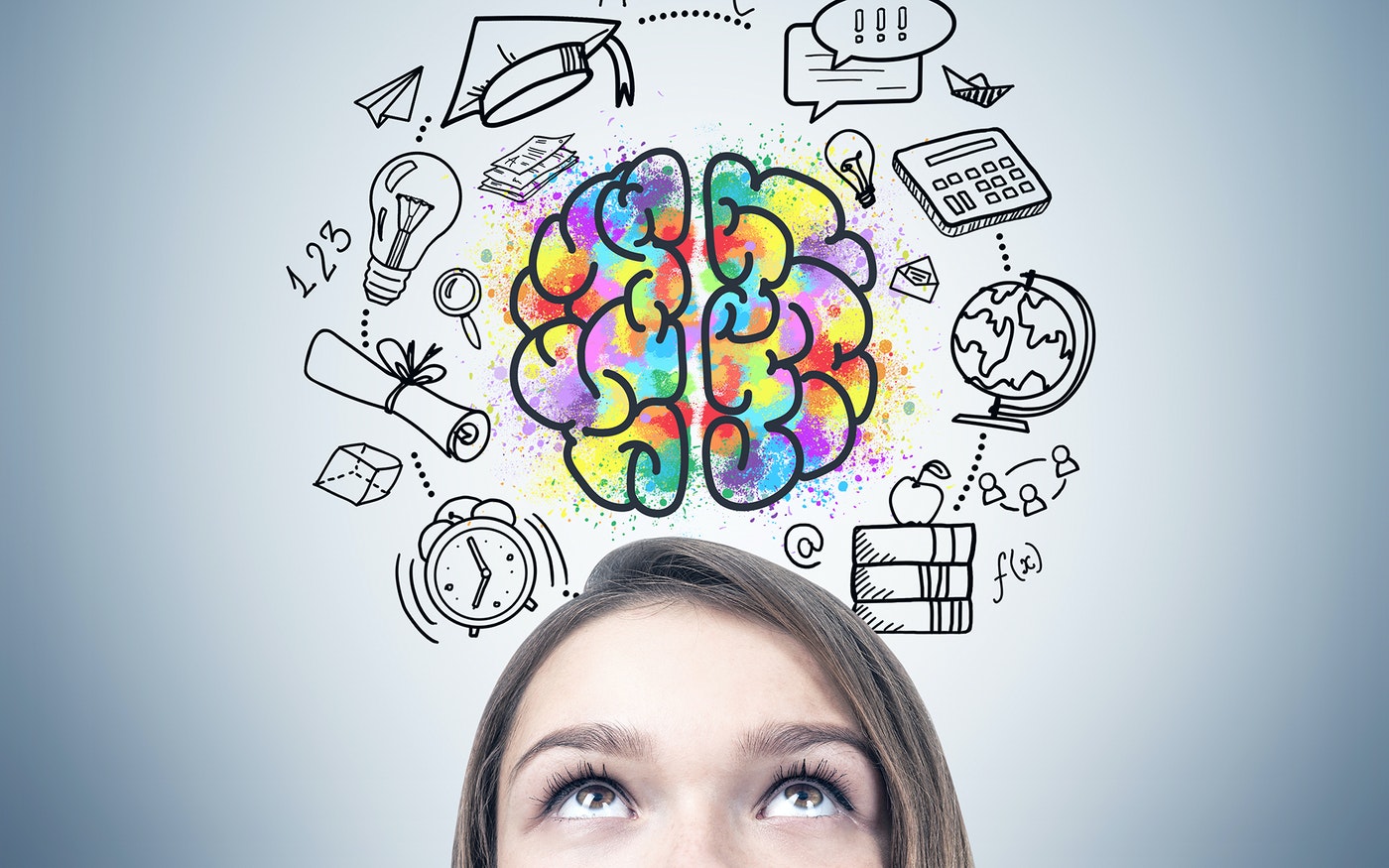Anxiety and Depression
| Site: | Colorado Education Learning Management System |
| Course: | 2e (Open Access) Supporting Twice Exceptional Learners |
| Book: | Anxiety and Depression |
| Printed by: | Guest user |
| Date: | Friday, 26 December 2025, 7:29 AM |
Description
Table of contents
- 1. Overview
- 2. Anxiety & 2e
- 3. Types of Anxiety Disorders, Optional
- 4. Characteristics
- 5. Strategies to deal with anxiety
- 6. Depression & 2e
- 7. Types of Depression
- 8. Characteristics
- 9. Strategies to deal with depression
- 10. Anxiety, Depression, & Giftedness
- 11. Giftedness, Intensity & Risk of Suicide
- 12. Additional Resource, Optional
1. Overview
Disorders related to anxiety and depression are common in gifted learners and need consistent support in the classroom.
Although anxiety & depression were discussed in the 2e part one course, we want to go a bit deeper and discuss how these issues can be supported in the classroom.
If anxiety and depression disorders are severe, they may fall under the umbrella of severe emotional disturbance (SED), but many cases that need support are not that severe. This is when the 504 plan can be utilized.
2. Anxiety & 2e
Definition - Anxiety is defined as a feeling of worry, nervousness, or unease, typically about an imminent event or something with an uncertain outcome. It is characterized by feelings of tension and worry and sometimes physical symptoms accompany these feelings.
Feeling anxious is a normal emotion for all of us. Children too go through phases or temporary bouts of anxiety as they move through the various stages of childhood. However, when anxiety becomes excessive, chronic, and frequent, when it extends beyond a phase and negatively impacts functioning such as when it curtails a child's willingness to go certain places, interact with friends, or to try or do certain things, then it may indicate an anxiety disorder.
“Everyone experiences stress and anxiety at one time or another. The difference between them is that stress is a response to a threat in a situation. Anxiety is a reaction to the stress" (www.ADAA.org).
Current research suggests that most high ability students match the general population of students in how well-adjusted they are, in other words, are no more likely to have anxiety or depression than other students (Martin, et. al., 2010). The struggles and the imbalance that 2e children experience in their daily lives, however, can cause them to become anxious. An educator experienced in teaching 2e students, Miriam Darnell, describes it this way:
Most anxiety comes from feelings of helplessness and being out of control....Our 2e student's struggle with feelings of powerlessness in so many ways - from the inability to hold a pencil right, to difficulties with reading and math, to trouble finding a misplaced toy, to feelings that the entire world has gone mad and nothing makes sense on the news (Darnell, Coping with Obsessive Anxiety in 2e Children).
There are also common comorbidities with anxiety, including other anxieties, depression, and substance abuse. Anxiety also often presents as a secondary condition to other diagnoses, such as ASD, ADHD, learning disorders, and Tourette's Disorder (Doobay, A., Foley Nicpon, M., & Schabilion, K., 2020, Resources and Strategies for Teachers of High Ability Students With Anxiety. NAGC Conference). As you can see from this list, 2e students with these disabilities/disorders also would be at risk for an anxiety disorder.
Functional Impact of Anxiety
(Credit: Doobay, et. al., 2020)
Anxiety interferes with learning, performance, and behavior
- Disrupts attention, focus, concentration
- Lowers tolerance for frustration
- Forgetfulness
- Self-doubt
- Less efficient cognitive processing
- Task avoidance
- Escape behaviors
- Acting out symptoms associated with panic

Common Signs of Anxiety in High Ability Students:
(Credit: Doobay, et. al., 2020, and Howard, J. 2020.)
- Undue worry, fear, or distress, including about performance (e.g., fear of failure despite high performance)
- Dreading and avoiding situations that might trigger fear or embarrassment including the avoidance of challenge
- Low frustration tolerance
- Irritability / Outbursts / Disruptive behavior
- Report of minor health complaints or discomfort (e.g., headache, stomach ache, increased heart rate, chest pains, sweating, dizziness)
- Problems with concentration and memory
- Problems with sleep or changes in sleep patterns and/or appetite (often a decrease)
- Abrupt change in performance (e.g., "self-sabotage")
- Social withdrawal
3. Types of Anxiety Disorders, Optional
Several types of anxiety disorders exist
There are several types of anxiety disorders, including but not limited to, agoraphobia, generalized anxiety disorder, social anxiety disorder, and selective mutism. For a list with explanations, please see this document in our Google folder (optional).

4. Characteristics
Generalized Anxiety Disorder (GAD)
In our experience, Generalized Anxiety Disorder (GAD) is one of the most common disorders noted in 504 plans so we will be examining the characteristics of this particular disorder.

Generalized anxiety disorder symptoms can vary. They may include:
- Persistent worrying or anxiety about a number of areas that are out of proportion to the impact of the events
- Overthinking plans and solutions to all possible worst-case outcomes
- Perceiving situations and events as threatening, even when they aren't
- Difficulty handling uncertainty
- Indecisiveness and fear of making the wrong decision
- Inability to set aside or let go of a worry
- Inability to relax, feeling restless, and feeling keyed up or on edge
- Difficulty concentrating, or the feeling that your mind "goes blank"
- Fatigue
- Trouble sleeping
- Muscle tension or muscle aches
- Trembling, feeling twitchy
- Nervousness or being easily startled
- Sweating
- Nausea, diarrhea or irritable bowel syndrome
- Irritability
Physical signs and symptoms may include:
Additional information can be found below:
CDE - AnxietyNIH - Anxiety Disorders
5. Strategies to deal with anxiety
How adults can support their students: |
How to help students help themselves: |
|---|---|
|
|

Here are some general research-based accomodations:
o Reduce time pressures
o Identify a support person/safe space in the school
o Be consistent and predictable, yet flexible
o Provide choices (in order of completing tasks)
o Emphasize effort over outcomes
o Create opportunities for students to feel special
o Provide a warm, supportive learning environment
o Understand that behavioral outbursts can signal anxiety or low mood
o Behavioral support should always be positive and not punitive
For more information, click on links below (optional):
Classroom Accommodations for Anxiety
How Teachers Can Help Students Cope with General Anxiety in the Classroom
Management of anxiety begins at home
Understanding the Link Between Empathy and Anxiety in Gifted Children
6. Depression & 2e
Definition - Depression is a mood disorder that causes a persistent feeling of sadness and loss of interest. Also called major depressive disorder or clinical depression, it affects how you feel, think and behave and can lead to a variety of emotional and physical problems. You may have trouble doing normal day-to-day activities, and sometimes you may feel as if life isn't worth living. -Mayo Clinic
Children may display these symptoms but they may also show some or many of the following:

Videos - Watch all 3 short videos (less than 3 minutes each)
Important aspects of depression:
- Anxiety and depression often go hand-in-hand. Many people who develop one have also experienced the other. While the two disorders are very different, their symptoms can be similar.
- The symptoms many people connect with depression are feelings of sadness or hopelessness plus low energy and loss of interest and enjoyment in favorite activities.
- There is no single known cause of depression. The National Institute of Mental Health (NIMH) believes it most likely results from a combination of genetic, biochemical, environmental, and psychological factors. The incidence of childhood depression has been growing steadily, and the age at which it first appears in children continues to drop. Psychologist Maureen Niehart believes that the number of gifted children who suffer depression by the age of 12 is as high as 10 percent.
- Depression is an illness that requires professional help. Depression and anxiety disorder are often treated in the same way and at the same time. Both respond well to therapy (individual, group, and/or family), education and when necessary, medication.
- Many educators and psychologists believe that a highly effective step is to help children to develop a sense of empowerment - give them an opportunity to develop their gift(s) and talent(s) and maybe figure out a way for them to do things both for themselves and for others. Finally, work to teach gifted and 2e children the skill of self-advocacy.

7. Types of Depression
TYPES
Persistent depressive disorder(also called dysthymia) is a depressed mood that lasts for at least two years.
Bipolar disorder is different from depression, but it is included in this list is because someone with bipolar disorder experiences episodes of extremely low moods that meet the criteria for major depression (called “bipolar depression”).
Postpartum depression is much more serious than the “baby blues” (relatively mild depressive and anxiety symptoms that typically clear within two weeks after delivery) that many women experience after giving birth.
Seasonal affective disorder is characterized by the onset of depression during the winter months, when there is less natural sunlight.
Psychotic depression occurs when a person has severe depression plus some form of psychosis, such as having disturbing false fixed beliefs (delusions) or hearing or seeing upsetting things that others cannot hear or see (hallucinations).
Source: NIMH
For more information click on the following link:
8. Characteristics
Common signs and symptoms of depression in children and teenagers are similar to those of adults, but there can be some differences.
- In younger children, symptoms of depression may include sadness, irritability, clinginess, worry, aches and pains, refusing to go to school, or being underweight.
- In teens, symptoms may include sadness, irritability, feeling negative and worthless, anger, poor performance or poor attendance at school, feeling misunderstood and extremely sensitive, using recreational drugs or alcohol, eating or sleeping too much, self-harm, loss of interest in normal activities, and avoidance of social interaction.
Additional information can be found at the following websites:
https://www.cde.state.co.us/cdesped/ta_depressionhttps://www.cde.state.co.us/cohealth/suicideprevention
9. Strategies to deal with depression
Strategies to deal with depression
How adults can help:
- Avoid criticizing behaviors that are part of the child’s personality (sensitivity, intense, inquisitive)
- Help children practice resiliency (persistence, positive self-talk, tolerance for frustration, failing forward)
- Help children set reasonable goals for themselves
- Help them find a trusted adult to talk to
- Create a healthy meal plan
- Make sure they get a lot of sleep
- Make sure they get plenty of exercise
- If the student experiences sadness, unhappiness or grief that lasts more than two weeks, see professional help
Anxiety & Depression in Children
Existential Depression in Gifted Individuals
Depression in Gifted Children
The Unhappy Intellectually Gifted Child
10. Anxiety, Depression, & Giftedness

Neuropsychological Research
- Gifted learners often present with intensities not seen in typical learners.
- “Neuroscience research supports the belief that gifted individuals have increased intellectual, emotional, sensory and motor processing capacity.” (Tetreault et al., 2016)
The Columbus Group (1991) created the following definition to explain the cognitive and socio-emotional aspects of gifted learners:
“Giftedness is asynchronous development in which advanced cognitive abilities and
heightened intensity combine to create inner experiences and modes of awareness that are
qualitatively different from the norm. This asynchrony increases with higher intellectual capacity.”
Additional information can be found on the following websites:
Overexcitability and the Gifted
Tips for parents: Anxiety, Sensitivities and Social Struggles among Profoundly Gifted Kids
11. Giftedness, Intensity & Risk of Suicide
Research
Although there has not been research to substantiate an increase in suicide by gifted individuals, neuropsychological studies have found that the brain of a gifted individual feel emotions more intensely than typical individuals.
"...highly intelligent individuals are at a significantly greater risk of experiencing psychological and physiological disorders according to the study published in the journal Intelligence, online October 8, 2017" (Karpinski).
“Those with high IQ possess unique intensities and overexcitabilities which can be at once both remarkable and disabling on many levels” (Karpinski, 2017).
New Research
Tracy Cross has started the William & Mary Institute for Research on the Suicide of Gifted Students. Cross states that perfectionism, or a self- or socially inflicted pressure to perform well, is a common characteristic among gifted students and has been found to correlate with suicide ideation in studies of psychiatric and university samples (Spyker, M, 2017).
His concern is that gifted individuals may be more successful in their attempts. Based on journals he has read from several gifted adolescents who died by suicide, he believes this population may be better at planning and carrying out their plans, leading to a higher rate of completion from attempts. He acknowledges, however, it is too early to know if this is true (Spyker, M, 2017).
Video
For more information regarding this topic, please click on the links below:
In giftedness, is there more darkness?
ADAA Understanding Anxiety & Suicide Prevention
NCBI - Emotional and Behavioral Characteristics of Gifted Children and Their Families
11.1. Suicide Prevention
Suicide rates among ages 10-24 has skyrocketed over the past decade. Dr. Tracy Cross and his colleagues have recently opened the William & Mary Institute for Research on the Suicide of Gifted Students to examine this topic and find options for easy intervention.
Below is an excerpt from "In giftedness, is there more darkness?" by Marisa Spyker
“What worries me isn’t so much that the prevalence rates [of suicide] might be higher among gifted kids,” said Tracy Cross, citing the lack of data to make any such claim.”
His concern is that gifted individuals may be more successful in their attempts. Based on journals he has read from several gifted adolescents who died by suicide, he believes this population may be better at planning and carrying out their plans, leading to a higher rate of completion from attempts. He acknowledges, however, it is too early to know if this is true.
When darkness falls
Statistically, nearly 44,000 people die by suicide each year in the United States. Among people aged 15-34, it’s the second leading cause of death. But very little is known as to the level of intelligence or other creative talents of those who have died by suicide or made an attempt.
Disparities in the definition of gifted, the stigma surrounding suicide, and the fact that there are just a few champions researching the topic, make data notoriously scarce and difficult to collect. (According to Tracy and Jennifer Cross, the total number of school- and college-age gifted students represented in the studies is fewer than 640.)
Still, the data that has been collected offers hints as to what might make gifted students at risk for suicidal thoughts and tendencies. Perfectionism, or a self- or socially inflicted pressure to perform well, is a common characteristic among gifted students and has been found to correlate with suicide ideation in studies of psychiatric and university samples. There are also biological links (one study found a modest correlation between suicide ideation among gifted students and introversion, for example), however, Tracy Cross said he believes biology is often less of a factor than the context of the situation.
For full story, click here
Colorado Department of Education - Suicide Prevention resourcehttps://www.cde.state.co.us/cdesped/ta_suicideprevention
12. Additional Resource, Optional
Optional resource:
Anxiety checklist: How do I know if my child has an anxiety problem? (Autism website)
For a spring 2020 presentation by CDE's affective needs and serious emotional disability specialist, Bill Brown: Grief & Growth Cycle
For Parents:
Screening for an Anxiety Disorder: Children